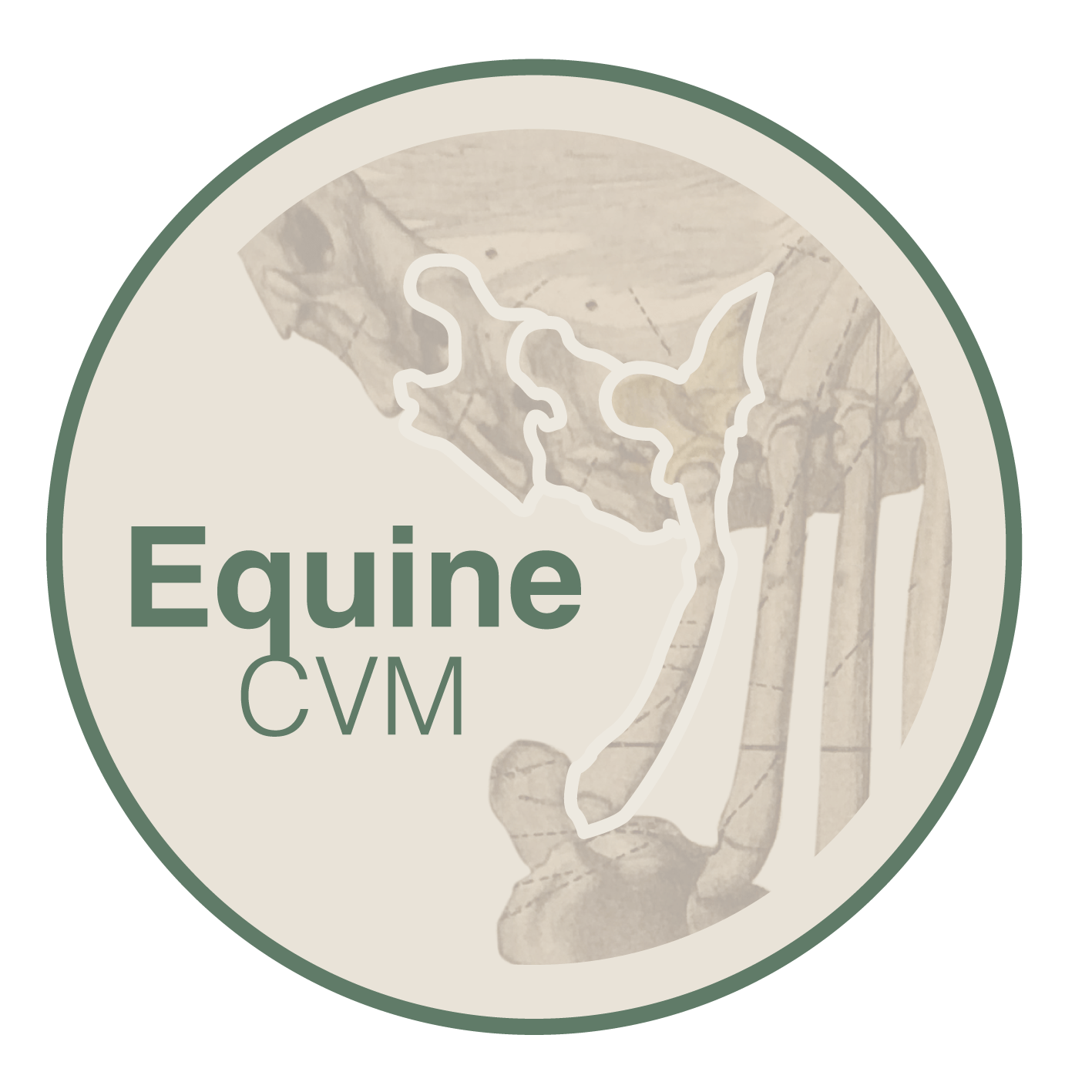What to do if the diagnose is ECVM?
That depends on the other findings and the clinical signs. 'The' horse with ECVM does not exist, so drawing up a protocol for treatment, training and management should always be customized.
To help you gain an overview of the choices to be made with a horse with ECVM, we have presented these in a decision tree below.

decision tree
- This decision tree is an example of how we think we can currently deal with horses with ECVM. This is not hard advice and no rights can be derived from it.
- Of course this is a somewhat simplified representation, in practice one will have to make several considerations.
- The purpose of drawing up this decision tree is to reflect our vision, and to prevent people from going too fast and thinking that all horses with ECVM should by definition be excluded as riding horses and/or breeding animals.
- There are too many horses with ECVM (on X-ray) that do function as riding horses to state uncritically that these horses all cannot be ridden.
- If all horses with ECVM were to be excluded from breeding, there would be a great risk that too many genes would be lost. As a result, the 'gene pool' becomes too small and inbreeding is actually stimulated. This increases the risk of developing genetic abnormalities.
- This decision tree is an example of the choices that can be made with the current available knowledge. It is quite possible that this will be adjusted later by more scientific research and advancing insight.
- With regard to breeding: it is not the case that combinations can be made in which it can be predicted with certainty that the foal will not have ECVM. Very likely there is genetic 'carriership' and horses that do not have ECVM can carry it, and thus pass it on to the foal. So at the moment the best option is to reduce the chance of ECVM.
Treatment
How do we treat a horse with ECVM? Of course we can’t change the anatomy of the horse. However, if the horse has clinical problems, it is not always a dírect consequence of the anatomy. More often it is suboptimal functioning (or use) of certain regions of the body, causing clinical problems elsewhere in the body.
Some horses with ECVM have clinical problems, others don't. Of the horses that are struggling, one has problems in the neck, for example, the other elsewhere in the body.
This means that 'the' horse with ECVM does not exist. There is certainly no standard approach in terms of treatment or training. This will always have to be determined on the basis of the complaints and the examination of the horse. Proper monitoring of the effect of any treatments and training is also very important.
Example::
-
-
- a horse has difficulty stabilising the neck by correct use of the musculature, which creates too much pressure on certain joints in the neck. These joints then start to hurt.
- because this horse cannot use the neck properly, the muscles will decrease further and the pressure on the joints will only increase. In addition, this horse will probably also stiffen up in the back. After all, it is difficult to use the back properly if the neck is painful.
- treatment of a horse with such complaints will possibly consist of treating the painful joints in the neck, involving a manual therapist (such as a physiotherapist) to help make the body comfortable again. In addition, it is very important to help the horse in the balance of the body. Think of the detailed balancing of the teeth and feet.
- The aim of this approach is that the horse becomes comfortable enough to train so that muscle building and -use can be worked on. As a result, the vertebral column is better supported.
-
in general, the treatment of a horse is often only intended to help the horse to get out of a ‘vicious circle’, meaning that the clinical problems need training and correct use of the body, but because of the clinical problems this is hard to do. So the aim of most treatments is to make the horse trainable. The ultimate 'solution' to keep the horse well is mainly in training and management.
The aim of treatment is therefore:
- to get/keep the horse comfortable and functional in its current 'career'
- make the horse 'trainable' so that through training and management the horse can remain comfortable and functional
Management
Some horses with ECVM seem to have difficulty balancing the body correctly, particularly in the area of the lower neck, chest and forelegs. In such horses we often also see uneven front feet and the uneven (slant) wearing of the teeth. This means we really need to be on top of this.
- Feet: one should not try to get uneven feet completely even, but it is advisable to ask the farrier to trim these horses more often than average, so that there is not too much time between the trimming sessions. This is to prevent the differences between the feet, and the corrections to be made, becoming too large.
- Teeth: Correctly balancing the teeth is also essential. When teeth are worn crookedly, there is different pressure on the joints of the jaw(TMJ) on the left and right. This can affect the position of the head in relation to the neck. This causes a twist in the neck, which can affect the entire spine.
- Body: Obviously, regularly presenting the horse for manual therapy (such as physiotherapy or chiropractic) can help the horse stay comfortable and balanced.
- In addition to balancing the teeth, feet and body, there are more options that could be useful: such as adjustments to the horse's living environment, the way of feeding, and the way of training.

